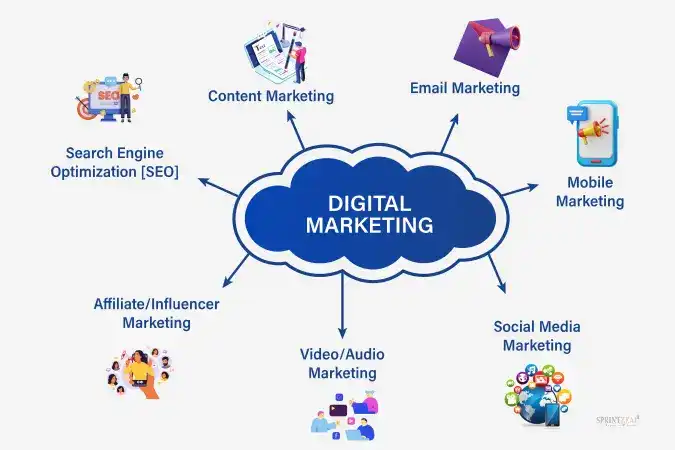Evolution of Video Game Graphics: A Historical Visual Journey
Mia Anderson

Photo: Evolution of Video Game Graphics: A Historical Visual Journey
The history of video game graphics is a captivating journey, one that has seen the industry evolve from simple, blocky shapes and pixelated characters to immersive, ultra-realistic virtual worlds. It's a story of technological advancements, creative innovations, and a relentless pursuit of bringing fantastical visions to life. This article will take you on a nostalgic trip down memory lane, exploring the key milestones, breakthroughs, and the people who pushed the boundaries of what was thought possible in video game graphics. By the end of this article, you'll have a deeper appreciation for the art that graces your screens today and the pioneers who made it all possible.
The Early Days: 8-Bit and the Birth of an Industry
The 1980s marked the beginning of the video game revolution, with 8-bit consoles and arcade machines dominating the scene. While the graphics of this era may seem rudimentary now, they were a marvel at the time. Games like "Pac-Man," "Space Invaders," and "Super Mario Bros." captivated players with their colorful sprites and simple, yet addictive gameplay. The limited color palette and blocky resolution were a result of the technical constraints of the time, but they also laid the foundation for future innovations.
The 8-bit era was all about simplicity and charm. Games relied on distinctive art styles and clever use of limited resources to create memorable characters and worlds. For example, "The Legend of Zelda" on the Nintendo Entertainment System (NES) utilized a top-down perspective and simple graphical tiles to create a vast and immersive world for players to explore. This period taught developers the importance of good art direction and how to convey complex ideas and narratives within technical limitations.
Technological Advancements: 16-Bit and Beyond
As technology progressed, so too did the capabilities of video game consoles and computers. The transition from 8-bit to 16-bit marked a significant leap in graphical fidelity. Consoles like the Super Nintendo Entertainment System (SNES) and Sega Genesis introduced gamers to vibrant, detailed worlds with smoother animations and more sophisticated art styles.
The 16-bit era saw the rise of iconic franchises like "Final Fantasy," "Street Fighter," and "The Simpsons." These games showcased improved shading, parallax scrolling, and more intricate character designs. Developers began experimenting with pseudo-3D effects, pushing the boundaries of what 2D graphics could achieve. "Sonic the Hedgehog," with his sleek, blue design, was a perfect example of a character created to showcase the speed and fluidity of the new generation of consoles.
This period also witnessed the emergence of CD-ROM technology, which offered significantly more storage space than cartridges. Games could now include full-motion video, enhanced audio, and even voice acting, further immersing players in the virtual worlds.
Entering the Third Dimension: 3D Graphics and Poly Counts
The shift from 2D to 3D graphics was a pivotal moment in the history of video game graphics. The early '90s saw the release of the first truly 3D games, utilizing polygonal models and texture mapping to create immersive, three-dimensional worlds. Games like "Wolfenstein 3D," "Doom," and "Star Fox" ushered in a new era of gaming, offering players unprecedented freedom of movement and exploration.
While the polygon count and texture quality of these early 3D games were limited by the hardware of the time, they laid the groundwork for future advancements. Developers began to master the art of creating convincing 3D environments, and soon, games like "Tomb Raider," "Gran Turismo," and "Super Mario 64" showcased the true potential of the medium. Lara Croft, with her detailed polygonal model and fluid animations, became an iconic symbol of this new era.
The race for higher polygon counts and more detailed textures was on, with each new generation of hardware pushing the boundaries of what was possible. The release of the PlayStation 2, Xbox, and Nintendo GameCube brought even higher-quality 3D graphics to the masses, with games starting to resemble interactive Hollywood blockbusters.
HD Revolution and Beyond
The turn of the millennium brought with it a new era of high-definition (HD) displays and more powerful hardware. The introduction of HD resolutions (720p, 1080p, and beyond) marked a significant leap in visual clarity and detail. Games could now display intricate textures, lifelike character models, and stunning environmental effects.
The release of consoles like the Xbox 360 and PlayStation 3 further fueled the HD revolution. Games like "Gears of War," "Uncharted," and "The Last of Us" showcased incredibly detailed visuals, realistic lighting effects, and complex animations. Developers also began to experiment with more dynamic and interactive environments, blurring the lines between games and interactive cinematic experiences.
As processing power continued to increase, developers could render more complex scenes in real-time, pushing the boundaries of what was possible. This era also saw the rise of independent game development, with smaller teams creating unique and artistic experiences that challenged the norms of traditional game design.
The Future is Here: UHD, VR, and AI
Today, video game graphics have reached unprecedented levels of realism and immersion. The introduction of Ultra High Definition (UHD) resolutions, also known as 4K, has pushed the envelope even further, delivering incredibly sharp and detailed visuals. Moreover, the emergence of virtual reality (VR) and augmented reality (AR) technologies has revolutionized the way we interact with games, offering truly immersive experiences that were once the stuff of science fiction.
The future of video game graphics is bright, and the rate of progress shows no signs of slowing down. Artificial intelligence (AI) is already playing a significant role, with advanced machine learning techniques used to create dynamic and responsive worlds. AI-generated graphics and content will become more prevalent, allowing developers to create diverse and tailored gaming experiences for players.
The history of video game graphics is a testament to human ingenuity and our insatiable appetite for immersive entertainment. What began as simple, pixelated shapes has evolved into a multi-billion dollar industry that continues to push the boundaries of what is possible. As we look back on how far we've come, we can only imagine what the future holds for this incredible medium.
In conclusion, the evolution of video game graphics has been nothing short of extraordinary. Each generation of hardware and software advancements has brought us closer to achieving true-to-life visuals and immersive experiences. The pioneers and innovators of this industry have paved the way for the incredible games we enjoy today, and their influence will continue to shape the future of gaming. As we anticipate what the next chapter holds, one thing is certain: the journey of video game graphics is far from over, and the best is yet to come.
Marketing
View All
January 22, 2025
The Future of Digital Marketing RevealedExplore where digital marketing is headed in the next decade. From AI to VR, see what’s shaping the future of online marketing. Don’t get left behind!
Mia Anderson

January 23, 2025
10 Content Strategies for Digital SuccessCreate winning content with these 10 proven digital marketing strategies. Enhance engagement and conversions starting today!
Mia Anderson

January 19, 2025
How to Master Digital Marketing BasicsLearn the essentials of digital marketing in this beginner-friendly guide. Kickstart your journey with step-by-step strategies. Start mastering today!
Mia Anderson
Entertainment
View AllDiscover the top movies to watch in 2024. Explore our curated list of must-see films and stay updated on the year's hottest cinematic releases.
Mia Anderson
Discover how influencers' place in the media is changing. Discover how influencers are revolutionizing the marketing landscape and why it is impossible to ignore their impact on consumers. Find out the keys to their worth and success!
Mia Anderson
Discover the latest strategies for creating a successful podcast in 2024. Learn key tips and techniques to launch and grow your show effectively. Read now!
Mia Anderson
Discover the best premium TV shows streaming right now. Get exclusive recommendations and top picks to enhance your viewing experience. Click to explore!
Mia Anderson
Automotive
View AllExplore how the rise of electric vehicle (EV) infrastructure is driving changes in land use and urban planning worldwide.
Read MoreCompare the total cost of ownership (TCO) between EVs and internal combustion engine vehicles. Which is more affordable?
Read MoreDiscover how AI applications are transforming EV technology, from autonomous driving to predictive maintenance.
Read MorePolular🔥
View All
1
2
3
4
5
6
7
8
9
10
Technology
View All
November 3, 2024
10 Tech Gadgets You Didn't Know You Needed in 2024
Discover the top 10 tech gadgets that will change your life in 2024. Uncover hidden must-haves read now!

September 17, 2024
Top Software Development Life Cycle Trends to Watch in 2024
Explore the latest 2024 trends in the Software Development Life Cycle. Learn how AI, MLOps, and cloud innovations are shaping the future. Read now for insights!

August 12, 2024
Small Business, Big Leap: Call Center Software that Scales with You
Elevate your small business with call center software. Discover the top 5 platforms with advanced features like AI bots and omnichannel support to transform your customer experience.
Tips & Trick






















